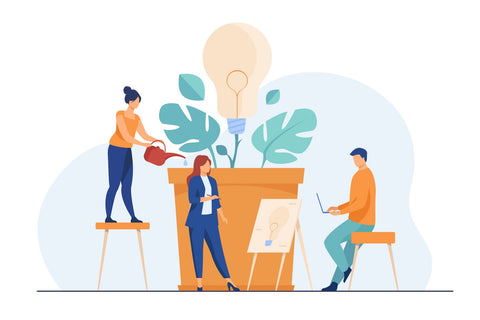6 steps to raise environmentally conscious kids
Living in the 21st century, we find ourselves at a historical turning point where our actions have the potential to alter the course of not just humanity but of our planet itself. The natural environment that sustains all life on our planet faces an unprecedented threat of destruction. However, we also have access to a wide pool of research and knowledge that can inform our actions and help us avert the threat to our environment. An informed, sustained effort to protect our environment is the need of the hour, and we need all hands on deck!

Children have the greatest stake in the future of our planet and can make a significant impact in defending it if they’re taught about sustainability and the environment early on. Here are some steps you can take as a parent or an educator to raise environmentally conscious kids:
Step 1: Familiarise them with their local environment
The first step to environmental consciousness is to develop a personal bond with the environment. When children recognize the natural environment as the tangible surroundings they live in as opposed to an abstract idea, they are able to develop a clearer definition of environment.
Giving children opportunities to interact with nature, such as taking them out on a field trip to explore a local nature reserve is a great way to give them a sense of the scale of the natural world aside from offering plenty of stimulation to their curiosity. Guiding them in safely and respectfully exploring the natural surroundings can help develop an enduring, mutually beneficial bond with the environment.

Step 2: Help them understand why they need to step up
Once children feel personally connected to the environment it’s a lot easier for them to be invested in its well being. There are multiple ways to teach children about the threats to the environment and the role they can play in alleviating them. There are a variety of children’s books available that are intended to deepen their understanding of the environment and the contemporary issues surrounding it. Environmental education in schools plays a major role in building children’s consciousness regarding the environment and sustainable practices - placing students at the centre of the educational process and enhancing their autonomy was found to be especially advantageous to the process of environmental education(Kostova, Atasoy, 2008, p. 8).

Step 3: Understanding one’s personal impact
As a child goes on to learn about the environment and the challenges to its well being it’s important to help them see that they aren’t just passive observers but rather active participants in the fate of the planet. Simple reflection on the sustainability of their habits, such as their usage and wastage of electricity and water, or over reliance on plastic products can be used as a starting point to calculate their personal impact on the environment. This can help children recognize the role they can play in environmental conservation, right from an individual level.
To understand how some everyday items we all use can have devastating effects on our environment, check out this blog we wrote.

Step 4: Empower children to come up with solutions
The flip side to understanding how one’s actions might be detrimental to the environment is to realise that one can have a positive impact on it as well. Collaboratively addressing environmental concerns with kids builds their perception of themselves as agents of change and future leaders of conservation.
Environmental education is a multidisciplinary field and as such can be a great outlet for children to use their knowledge of various school subjects such as biology, geography, maths, chemistry, and physics to ideate creative solutions to the issues they are learning about. Coming up with solutions for household waste management, for example, can be a fun and rewarding challenge for kids, with positive outcomes such as less waste generation and compost for a kitchen garden.
Need some help getting started with composting? Read our blog on 4 easy steps to composting.

Step 5: Taking action - changes that can be made right away
Walking the talk is the need of the hour when it comes to saving the planet. Teaching children to start young when it comes to actively protecting the environment is crucial to their development as environmentally conscious adults. Help them see that their environmental education has equipped them with skills for sustainable living and encourage them to practise it in their everyday lives. Small lifestyle changes such as switching to eco-friendly alternatives to plastics can have a large(and measurable!) impact in reducing plastic waste in the environment.
To learn more about eco-friendly alternatives to plastics, check out our blog on the topic.

Step 6: Raising awareness and sharing knowledge
Knowledge sharing and discussion were found to be highly beneficial in the environmental education of kids(Kostova, Atasoy, 2008, p. 19). The act of sharing their learnings not only develops children’s ability to effectively advocate for the needs of the environment but also teaches them that the impact they're capable of having can stretch far beyond a personal level.
Collaborative effort is a central aspect of environmental conservation - encouraging kids to share their ideas and knowledge of sustainable practices enables them to take their environmental education outside their homes and classrooms into all aspects of their life as environmentally conscious and responsible children.
Can you think of any more ways to help children understand their role in environmental protection? Leave a comment below!

References:
Methods Of Successful Learning In Environmental Education(Kostova, Atasoy, 2008), Journal of Theory and Practice in Education






